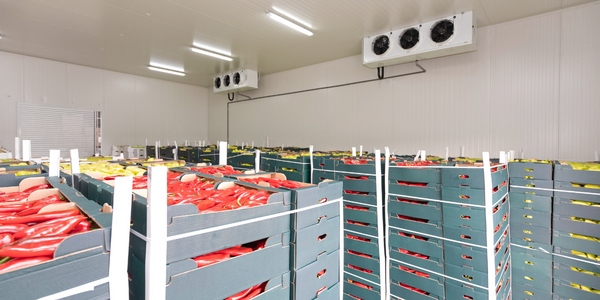Applicable Industries
- Transportation
Use Cases
- Personnel Tracking & Monitoring
- Time Sensitive Networking
About The Customer
Mountain Line Transit Authority (MLTA) is a transit network that has grown over the past 25 years into a 24-line system serving approximately 1.3 million rides each year. The transit authority serves not only downtown Morgantown but also the more rural surrounding area and the large student population at West Virginia University. MLTA has always re-bid its services three times per year due to the university schedule. The COVID-19 pandemic posed a significant challenge to MLTA, disrupting its ridership and workforce.
The Challenge
Mountain Line Transit Authority (MLTA) has grown its small transit network into a thriving 24-line system serving approximately 1.3 million rides each year. The transit authority not only serves downtown Morgantown but also the more rural surrounding area and the large student population at West Virginia University. Due to the university schedule, MLTA has always re-bid its services three times per year, a daunting challenge for any agency. This challenge grew even more daunting when the COVID-19 pandemic struck, disrupting MLTA’s ridership and workforce. The team was spending a month completing a full service re-bid, which was a significant drain on resources and time.
The Solution
MLTA turned to Remix Scheduling to reduce the staff time spent on planned re-bids, as well as unplanned route and schedule changes brought about due to COVID-19. With Remix, the team was able to cut down the time spent on a full service re-bid from a month to just a week. They were also able to use Remix to quickly create multiple schedules that could be operated at different staffing levels, depending on what staff was available during the pandemic. For every new runcut they complete, the team knows that Remix will offer multiple options and make any tradeoffs easily apparent, so they can always select the best option. This solution has empowered MLTA’s team to spend less time on day-to-day tasks and more time on innovative solutions for the future.
Operational Impact
Quantitative Benefit

Case Study missing?
Start adding your own!
Register with your work email and create a new case study profile for your business.
Related Case Studies.

Case Study
Airport SCADA Systems Improve Service Levels
Modern airports are one of the busiest environments on Earth and rely on process automation equipment to ensure service operators achieve their KPIs. Increasingly airport SCADA systems are being used to control all aspects of the operation and associated facilities. This is because unplanned system downtime can cost dearly, both in terms of reduced revenues and the associated loss of customer satisfaction due to inevitable travel inconvenience and disruption.

Case Study
IoT-based Fleet Intelligence Innovation
Speed to market is precious for DRVR, a rapidly growing start-up company. With a business model dependent on reliable mobile data, managers were spending their lives trying to negotiate data roaming deals with mobile network operators in different countries. And, even then, service quality was a constant concern.

Case Study
Digitize Railway with Deutsche Bahn
To reduce maintenance costs and delay-causing failures for Deutsche Bahn. They need manual measurements by a position measurement system based on custom-made MEMS sensor clusters, which allow autonomous and continuous monitoring with wireless data transmission and long battery. They were looking for data pre-processing solution in the sensor and machine learning algorithms in the cloud so as to detect critical wear.

Case Study
Cold Chain Transportation and Refrigerated Fleet Management System
1) Create a digital connected transportation solution to retrofit cold chain trailers with real-time tracking and controls. 2) Prevent multi-million dollar losses due to theft or spoilage. 3) Deliver a digital chain-of-custody solution for door to door load monitoring and security. 4) Provide a trusted multi-fleet solution in a single application with granular data and access controls.

Case Study
Vehicle Fleet Analytics
Organizations frequently implement a maintenance strategy for their fleets of vehicles using a combination of time and usage based maintenance schedules. While effective as a whole, time and usage based schedules do not take into account driving patterns, environmental factors, and sensors currently deployed within the vehicle measuring crank voltage, ignition voltage, and acceleration, all of which have a significant influence on the overall health of the vehicle.In a typical fleet, a large percentage of road calls are related to electrical failure, with battery failure being a common cause. Battery failures result in unmet service agreement levels and costly re-adjustment of scheduled to provide replacement vehicles. To reduce the impact of unplanned maintenance, the transportation logistics company was interested in a trial of C3 Vehicle Fleet Analytics.

Case Study
3M Gains Real-Time Insight with Cloud Solution
The company has a long track record of innovative technology solutions. For example, 3M helps its customers optimize parking operations by automating fee collection and other processes. To improve support for this rapidly expanding segment, 3M needed to automate its own data collection and reporting. The company had recently purchased the assets of parking, tolling, and automatic license plate reader businesses, and required better insight into these acquisitions. Chad Reed, Global Business Manager for 3M Parking Systems, says, “With thousands of installations across the world, we couldn’t keep track of our software and hardware deployments, which made it difficult to understand our market penetration.” 3M wanted a tracking application that sales staff could use to get real-time information about the type and location of 3M products in parking lots and garages. So that it could be used on-site with potential customers, the solution would have to provide access to data anytime, anywhere, and from an array of mobile devices. Jason Fox, Mobile Application Architect at 3M, upped the ante by volunteering to deliver the new app in one weekend. For Fox and his team, these requirements meant turning to the cloud instead of an on-premises datacenter. “My first thought was to go directly to the cloud because we needed to provide access not only to our salespeople, but to resellers who didn’t have access to our internal network,” says Fox. “The cloud just seemed like a logical choice.”







